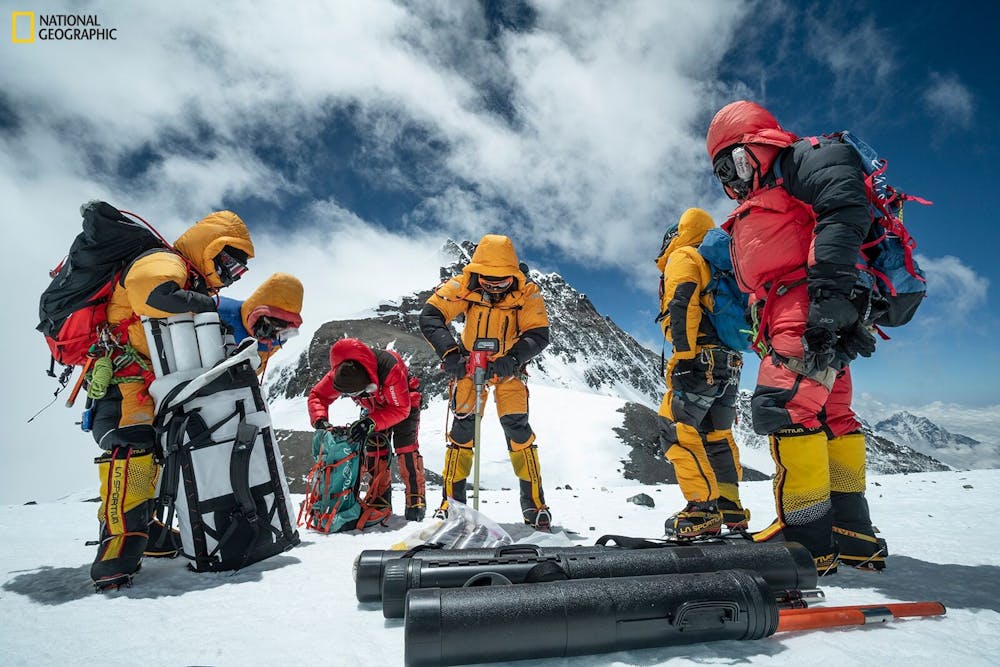American University alumnus Sam Sheline climbed Mount Everest as a part of the Perpetual Planet expedition series, as part of an effort to better understand the effects of climate change and make educational films for students.
Sheline was an assistant producer on the National Geographic and Rolex Perpetual Planet Extreme Expedition to Mount Everest. He was on the expedition during May and April of 2019.
“I knew that the expedition was happening, but I didn’t know that I was actually going to go on it until about six weeks before we left, maybe seven,” said Sheline. “That night, I was on the treadmill in my apartment building with a 40-pound pack on, max incline, just starting to train because I knew it would be so grueling.”
Sheline, who studied biology at Davidson College in North Carolina, came to AU in 2014 to pursue his MFA in Environmental Filmmaking. It was through that program that Sheline got the hands-on experience that ultimately led him to National Geographic, and from there, Mount Everest.
“It was just a perfect fit,” said Sheline. “It’s in the D.C. area, it’s close to home and it’s one of the very few schools in the world, let alone the country, that has an environmental filmmaking program.
One of the unexpected outcomes of the trip for Sheline was getting a sense of Nepali culture. He said that the point of the expedition was to document science, so the complexities of the culture weren’t necessarily shown in the documentary. If he could go back and make another piece, though, he said he would love to tell the cultural story of Nepal.
As a student in the environmental filmmaking program, Sheline got to direct and produce his own projects, including a 2016 short film about a Disney theme park that was almost built in Virginia in the 1990s, called “When Mickey Came to Town.”
Chris Palmer, the former director of the Center for Environmental Filmmaking, took Sheline on as a research assistant in 2014 and suggested that he take the lead on “When Mickey Came to Town.”
“[Palmer] took a big leap of faith, believing that I’d be able to pull it off,” said Sheline. “That became my biggest project to date, by far.”
The current director of the Center for Environmental Filmmaking, Maggie Burnette Stogner, believes that opportunities like these are what makes the Center so enriching.
“Our curriculum is very experiential and hands-on, and it gives students a real competitive advantage,” said Burnette Stogner. “There’s a very motivated spirit here and the students are so passionate.”
Sheline has been at National Geographic for about a year as associate producer, where he
spends his time creating short educational films for students. He has also spent time as an adjunct professor at the George Washington University.
“I definitely see creating meaningful and impactful stories as my role in both the climate and greater environmental crisis,” said Sheline. “I decided not to become a scientist because I wanted to be able to have a broader reach.”




